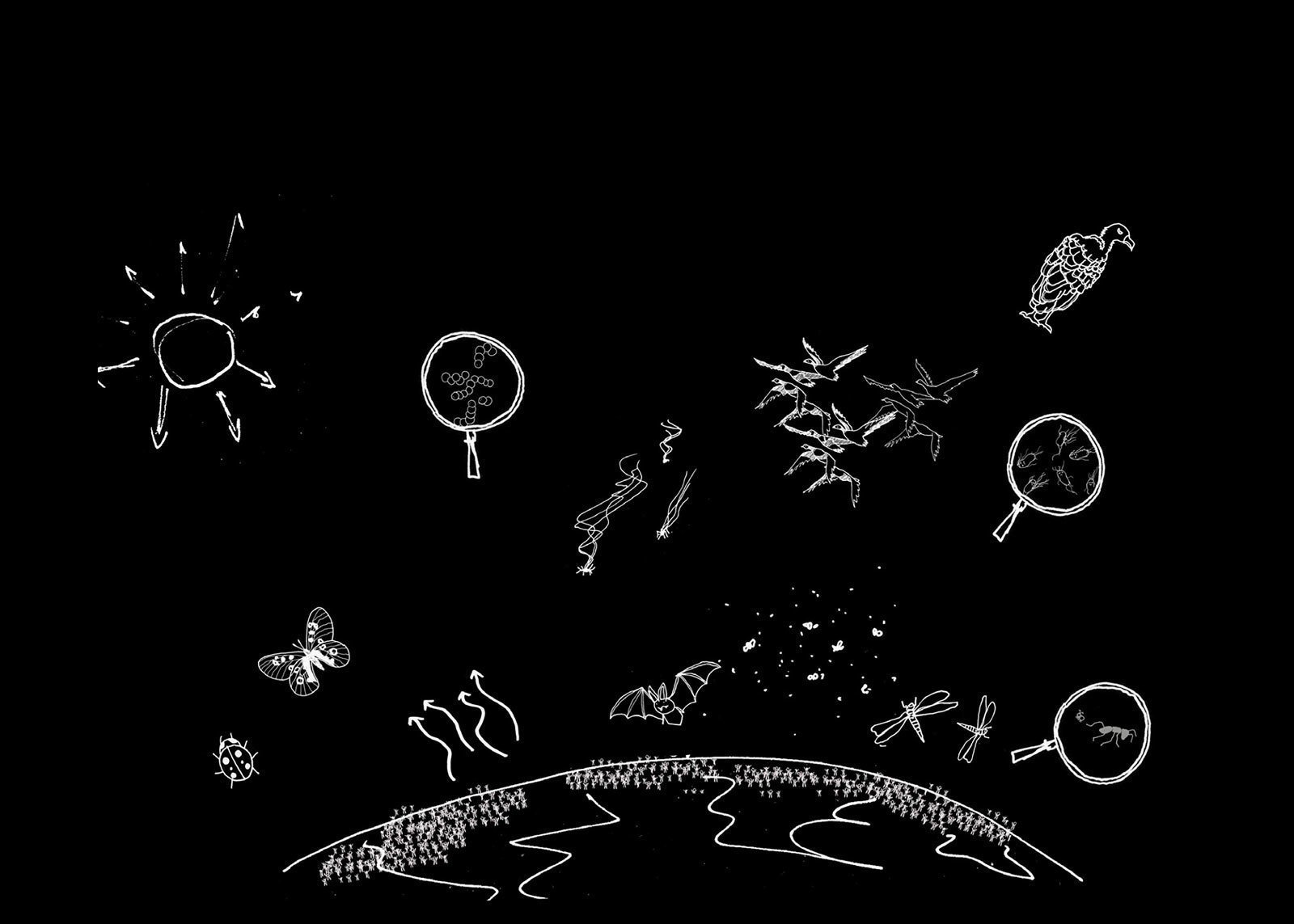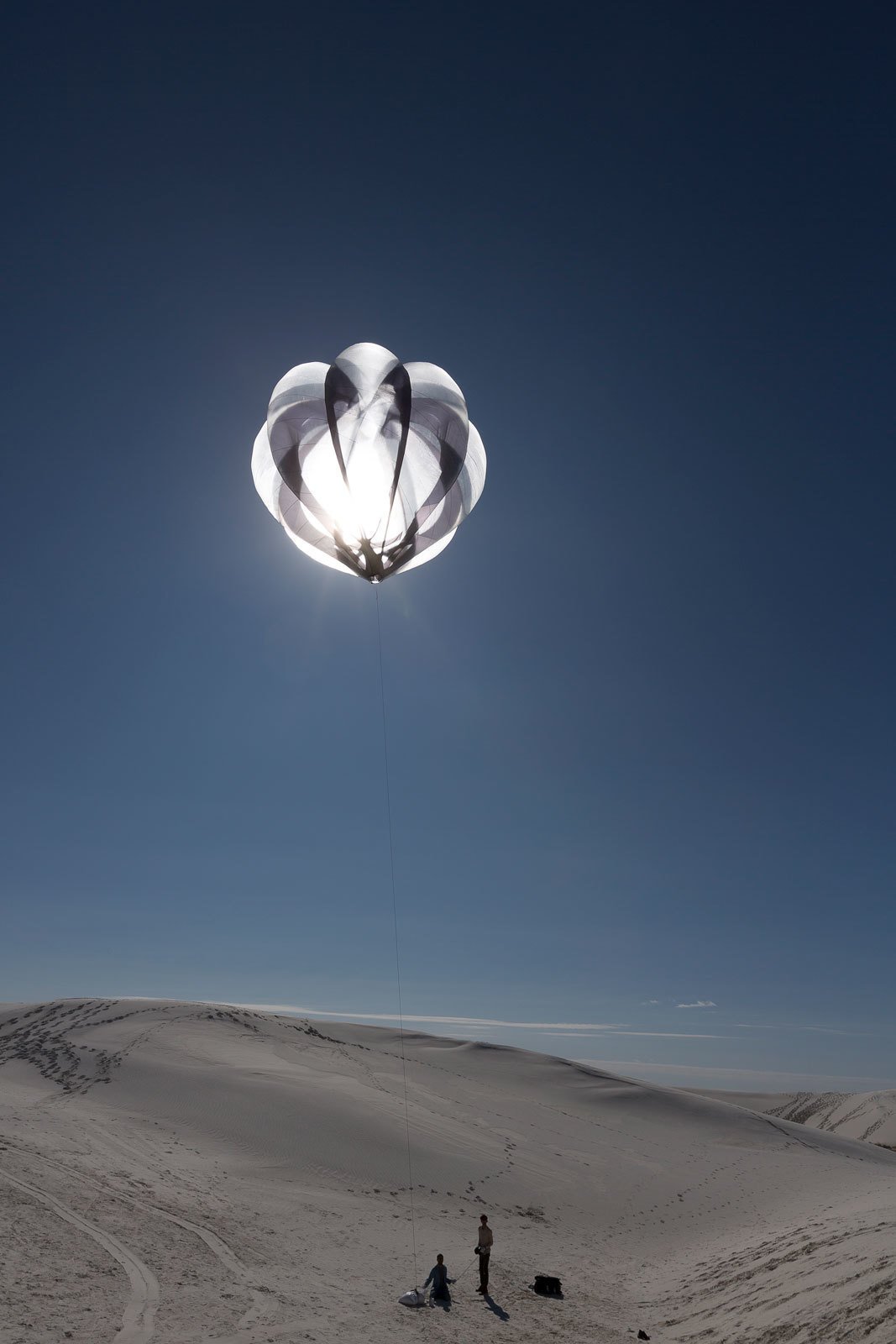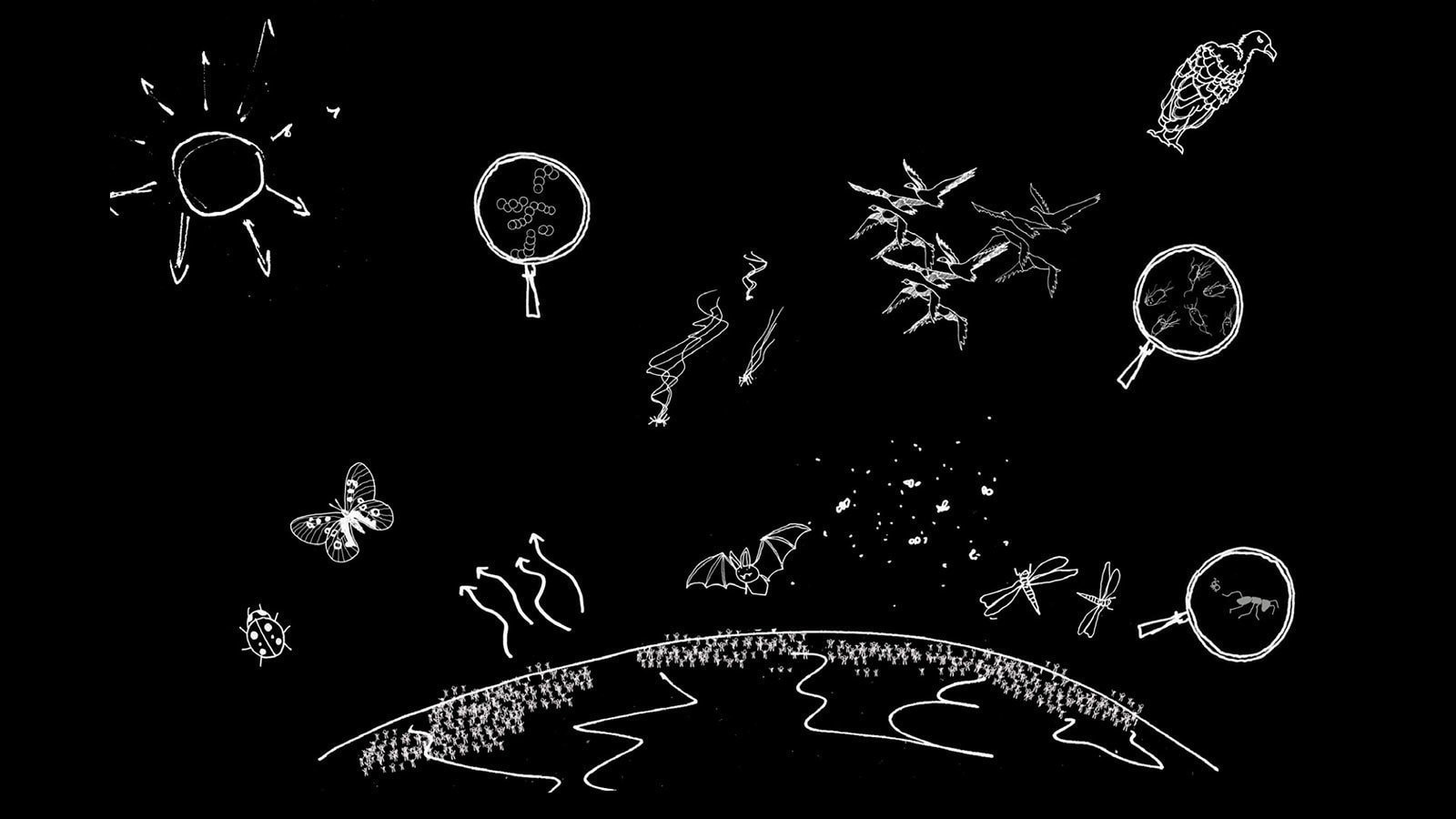Aerocene Manifesto. Aeronauts unite!
Toward a new epoch, free from borders, free from fossil fuels.

Tomás Saraceno
Air Ecology, 2016
Collage
Courtesy of the artist
© Tomás Saraceno
While fossil-fuel-based industries continue their attempts to colonize other planets, the air, this common interface of terrestrial life, continues to be compromised: carbon emissions fill the air, particulate matter floats inside our lungs while electromagnetic radiation envelops the earth, dictating the tempo of surveillance capitalism. This control held by the few enacts the suffering of the multi-species many in the current era of ecological crisis. A different epoch is needed, one which radically upturns fossil narratives of materiality, and re-examines the inscribed notions of property and properties, human and inhuman, of production and subjection. How would breathing feel in a post-fossil-fuel era? How can we challenge the dominance of dispossessing geopolitical forces, and overcome the extractive approach to Earth and the wealth of life it provides for? Together, we call for this new epoch, which has been named Aerocene.
Aerocene is a proposal—a scene in, on, for, and with the air—toward a reciprocal alliance with the elements capable of restoring the air to a commonwealth of life.
Aerocene imagines space as a commons, a physical and imaginative place subtracted from corporate control and government surveillance.
Aerocene promotes de-securitized, free access to the atmosphere, through new tools and relational practices emerging from communities attempting to move the Earth's masses toward a post-fossil-fuel era.

Aerocene Road Map, 2016
Visualization by Studio Tomás Saraceno
Courtesy Aerocene Foundation
Licensed under CC BY-SA 4.0, 2019
The launch pad toward this new epoch is an aerosolar balloon, a Do-It-Together (DIT) entrance to the aerial, whose only non-engine is the wealth of energy gifted by the Sun. Once inflated with air and heated by the Sun, it elevates into the air, becoming a flying sculpture that rises without the use of fossil fuels, helium, hydrogen, solar panels, batteries or burners. In floating without carbon emissions, these aerosolar journeys speculate on the kinds of nomadic socio-political structures that may emerge if we could navigate the rivers of the atmosphere. This is to become airnomads, realizing, as wished by Rosi Braidotti, the “non fixity of boundaries and [to] develop a desire to go on trespassing.” This is to move from Homo economicus to Homo flotantis: attuned to planetary rhythms, conscious of living with other humans and non-humans, and who floats with the ocean of air, uprooting dominant geo-centric logics toward embodying an ever more entangled relationship with the atmosphere and the cosmos.
In bearing the consequences of the fossil-capital regime’s material practice of extraction, the atmosphere has become a highly stressed zone of the commonly composed terrestrial world. Aerodynamics, in constant movement and transformation, inherently entails complex spatial, temporal, socio-political, and ecological processes, and today embodies the unequal relations of power projected upward from the land. Hegemonic modes of re-/production in the midst of the Capitalocene, along with human mobility and organization within the web of life, has enacted the breach of atmospheric pollution thresholds, with CO2 emissions now exceeding more than 400 parts per million. This corruption of the air is the trigger for state shifts in Earth’s systems, the critical changes already under way, with planetary temperatures increasing and multifold inequalities proliferating in an age of resurgent nationalism and geopolitical instability.

Aerocene Human Flight launches in White Sands, New Mexico, USA, 2015
Part of Territory of the Imagination, Rubin Center for the Visual Arts, El Paso
Photo: © Studio Tomás Saraceno
Courtesy Aerocene Foundation
Licensed under CC BY-SA 4.0. 2019
What are the rites of passage, the corridors we need to open, in order to restore the right to drift and breathe? How can we overcome the paradox of decisions made by the few, simultaneously forcing and inhibiting the mobility and breathability of the multi-species many? Aerocene calls for an interplanetary ecology of practice which could reconnect with elemental sources of energy and the strata borne from the Sun and other planets, rising upward toward an era of renewed symbiotic relations and sensitivities within life’s entanglements. We suggest a model for a landscape that balances and harnesses our relationship with the unlimited potential of the Sun. This realization requires a thermodynamic leap of imagination, just like during an eclipse, when only in the absence of light do we become aware of our scale in the shadow of the cosmos.
Researchers in industrial and social ecology refer to “socio-metabolic regimes” to define the epochal shifts in energetic relationships between humans and their environment, establishing a strict correlation between the regimes and specific sets of social values. They argue that two of the main types of regime have been solar-based, those of hunter-gatherer and agrarian societies. Despite the existence of societies that still embody such relationships with the sun—together with all the other species and life forms—they, and the conditions for today’s civilizational infrastructures, are threatened by the domination of the current socio-metabolic regime, the one based on fossil fuels powering the Capitalocene.

Aerocene Human Flight launches in White Sands, New Mexico, USA, 2015
Part of Territory of the Imagination, Rubin Center for the Visual Arts, El Paso
Photo: © Studio Tomás Saraceno
Courtesy Aerocene Foundation
Licensed under CC BY-SA 4.0. 2019
This raises the urgency to rethink modes of being and of co-existence with the planet and all those our species shares it with. What could be the fourth socio-metabolic regime? What are our varying response-abilities within the current crises of our social, mental, and environmental ecologies under capitalism? What would be the new set of values necessary to drift us from the shadow sun of fossil capital, returning our socio-politically captured senses to that of the Earth rather than the imaginaries of the global and national?
It may be through a re-articulation of our relationship with the Sun, air, and cosmos that we open the boundaries of the Earth, to inhabit space with renewed interplanetary sensitivity, for this world and all others: free from borders, free from fossil fuels. Aeronauts, unite!
The Aerocene Manifesto, in development since 2018, is co-composed by the Aerocene Community. Join the co-development via aerocene.org.
